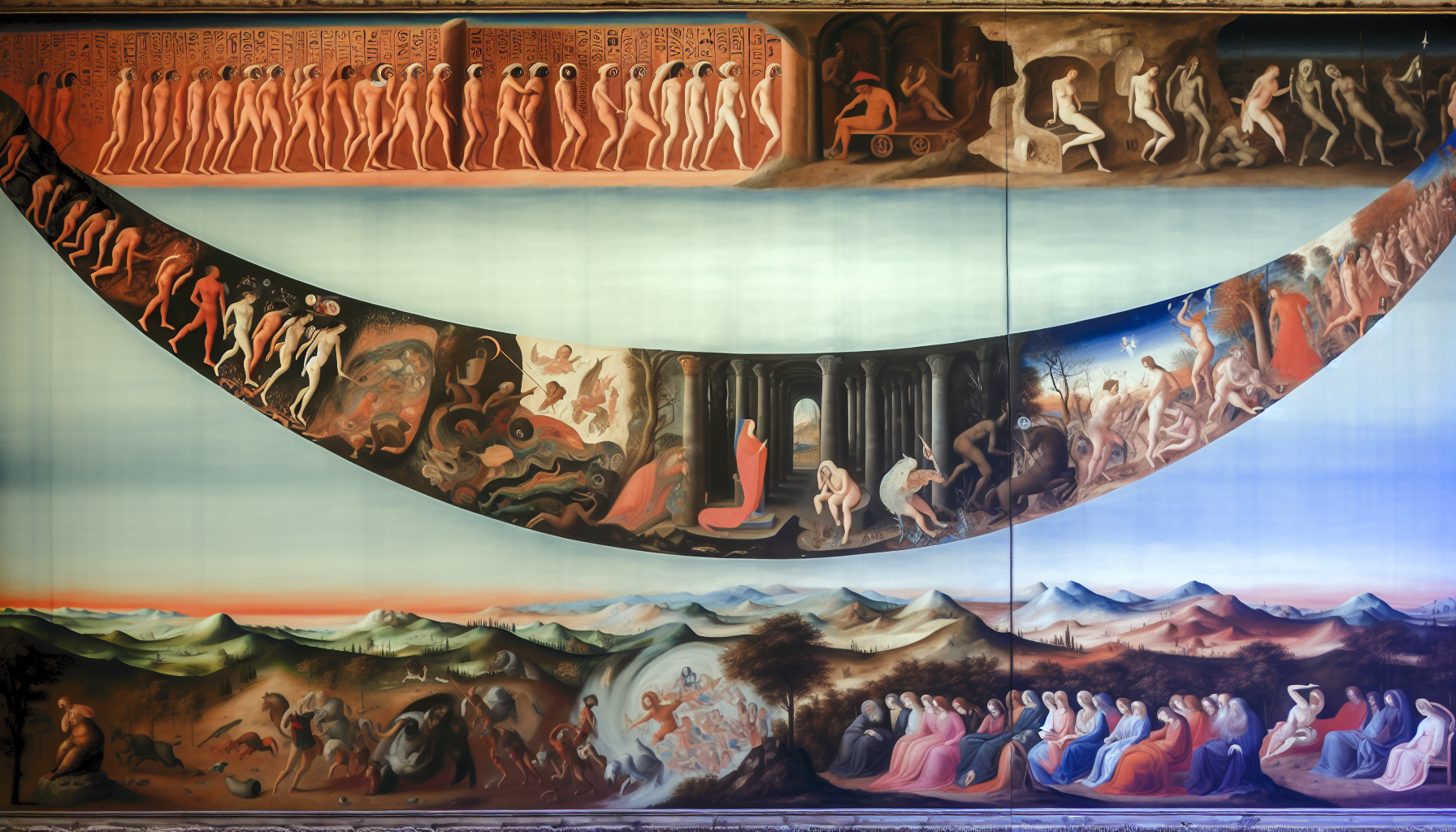Evolution of Landscape Painting
Landscape painting, as a genre, has captivated artists, connoisseurs, and the general public alike for centuries. Its development is a journey through history, culture, and technology, reflecting not just the changing aesthetics of societies, but also their shifting values and understanding of the natural world. From the ancillary backdrops of classical art to the subject of sublime reverence or environmental concern, the portrayal of landscapes in art has continually evolved—each era casting the natural world in a new light, inviting viewers to behold the majesty, mystery, and beauty of the environment that surrounds us.

The Birth of Landscape Painting
Historically, landscapes served primarily as contextual elements in art rather than subjects in their own right. Early landscape depictions can be found in ancient Greco-Roman frescoes, where they augmented mythological or historical narratives. As stand-alone art, landscape painting truly began to emerge during the Renaissance in Europe, when artists started to appreciate nature for its own sake.
The Dutch Golden Age - A Watershed Moment for Landscapes
The 17th century heralded a new era for landscape painting, especially within Dutch culture. The Dutch Golden Age saw the rise of artists like Jacob van Ruisdael and Aelbert Cuyp, who focused on the beauty and variability of the Dutch countryside. Their works, characterized by meticulous detail and a celebration of the land, were among the first to highlight landscapes as subjects worthy of attention and not merely backdrops for figural narratives.
This period also marked the inception of different sub-genres of landscape painting - from peaceful pastoral scenes and seascapes to cityscapes and night scenes. Landscape painting in the Dutch Golden Age reflected a secular society's prosperous relationship with its environment, and this celebration of the land as an entity was something truly novel.
Romanticism and the Sublime
Moving forward, the Romantic period of the late 18th and early 19th centuries signaled another significant shift. Romantic artists like Caspar David Friedrich in Germany and J.M.W. Turner in England moved away from the accurate depiction of specific locales towards more expressive representations. They sought to capture the emotional response that vast, untamed, and often dramatic landscapes elicited.
This era's landscapes conveyed a sense of the sublime—powerful scenes of nature that were both beautiful and terrifying, intended to evoke a sense of awe and also highlight human insignificance in the face of nature's grandeur. It was during this time that the concept of landscapes as symbolic of divine creation or as expressing profound philosophical ideas really took hold.
Impressionism and Open-Air Painting
The late 19th century brought with it the Impressionist movement. Artists such as Claude Monet, Camille Pissarro, and Vincent van Gogh took landscape painting in a bold new direction by focusing on the effects of light and color, often painted en plein air (outdoors). They abandoned the fine detail of previous movements, instead using loose brushwork to capture fleeting moments and the transient effects of light.
Impressionism marked a liberation of color and technique that would heavily influence the perception and execution of landscape art. This shift towards capturing a sensory impression of a place rather than a detailed depiction would have a lasting impact on the development of modern art.
Modern Perspectives and Abstraction
The 20th century saw countless movements and styles, each reflecting changing attitudes and experimental approaches to landscape painting. As the world navigated through wars, technological advancements, and social changes, so did the representation of landscapes evolve. Artists like Georgia O'Keeffe abstracted natural forms to their essence, while the surrealists injected landscapes with dream-like qualities, further questioning the viewer's perception of reality.
Movements such as abstract expressionism and minimalism even questioned the very need to represent a 'landscape' in the traditional sense. Instead, the essence or experience of a space became paramount, sometimes resulting in artwork that was completely abstract, with only a conceptual connection to real-world landscapes.
Contemporary Visions and Environmental Concerns
Landscape painting remains alive and influential in the 21st century, though today's artists often grapple with themes of environmental degradation and the human impact on nature. The traditional aesthetic appreciation is now frequently blended with activism or commentary, as seen in the works of contemporary artists like Alexis Rockman.
Digital technology has also introduced new mediums and techniques for creating landscapes. Artists are exploring virtual landscapes, using digital tools to both recreate realistic natural scenes and imagine entirely new worlds. This digital evolution pushes the boundaries of what we consider a landscape and how we interact with the concept of nature itself.
Conclusion: The Never-ending Evolution
As we trace the contours of the past, it's clear that landscape painting as a genre has continually reinvented itself, mirroring the times and societies from which it emerged. From elucidating human dominion to illustrating humanity's profound connection and increasing concern for the environment, landscapes in art have embodied our ever-evolving relationship with the natural world. As long as artists continue to engage with their environment—whether it be physical, social, or psychological—landscape painting will continue to evolve, offering fresh perspectives and challenging viewers to see the world through a myriad of vistas.
